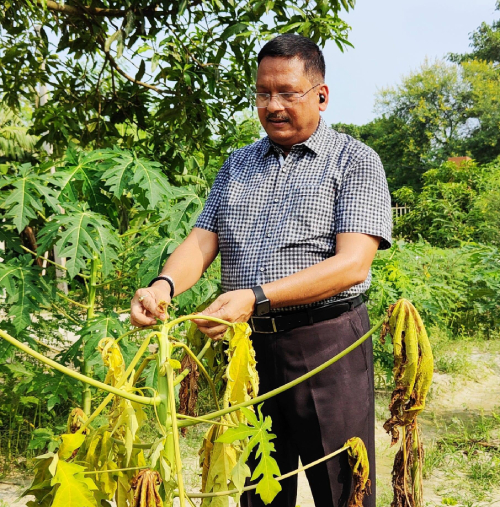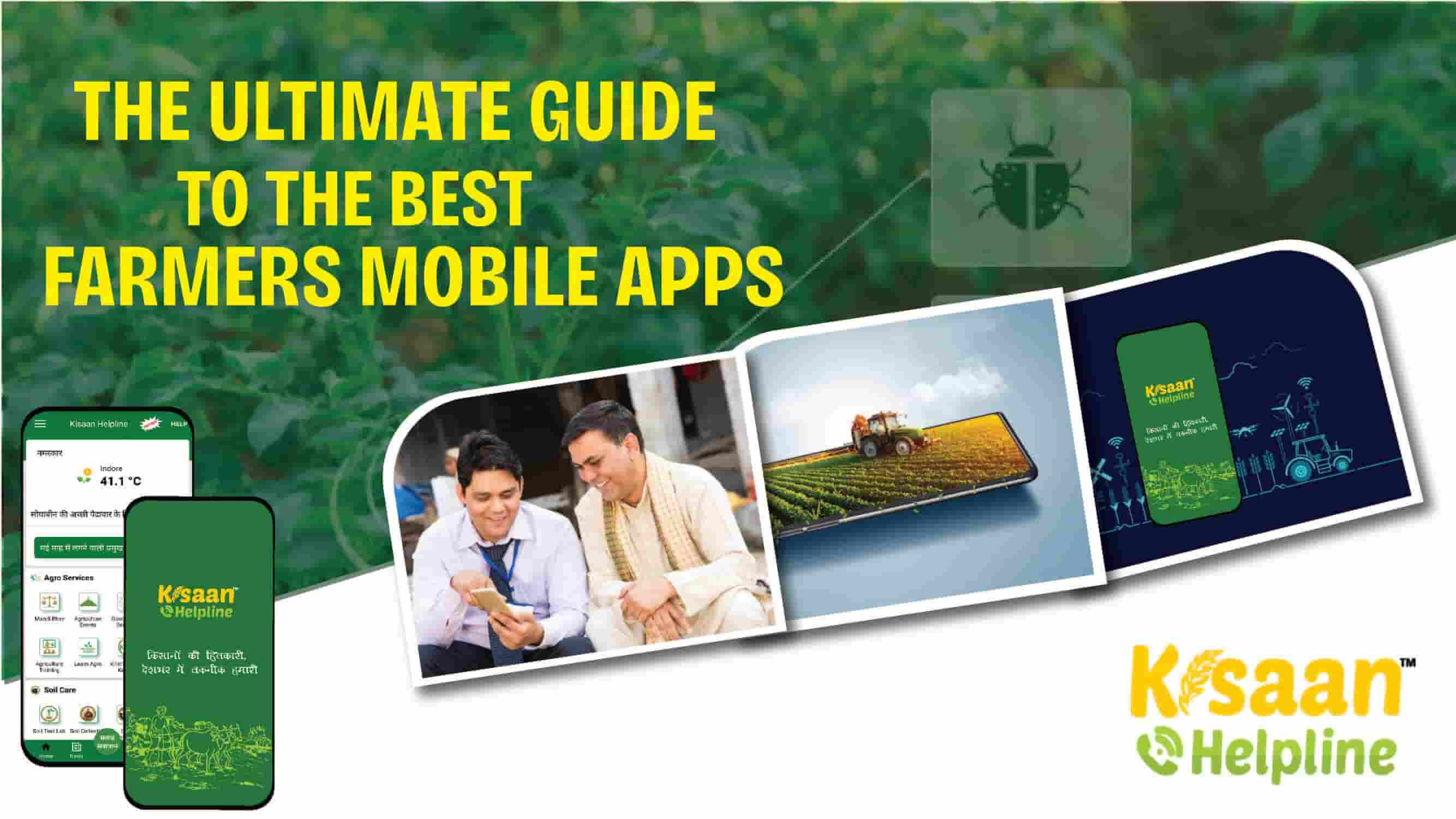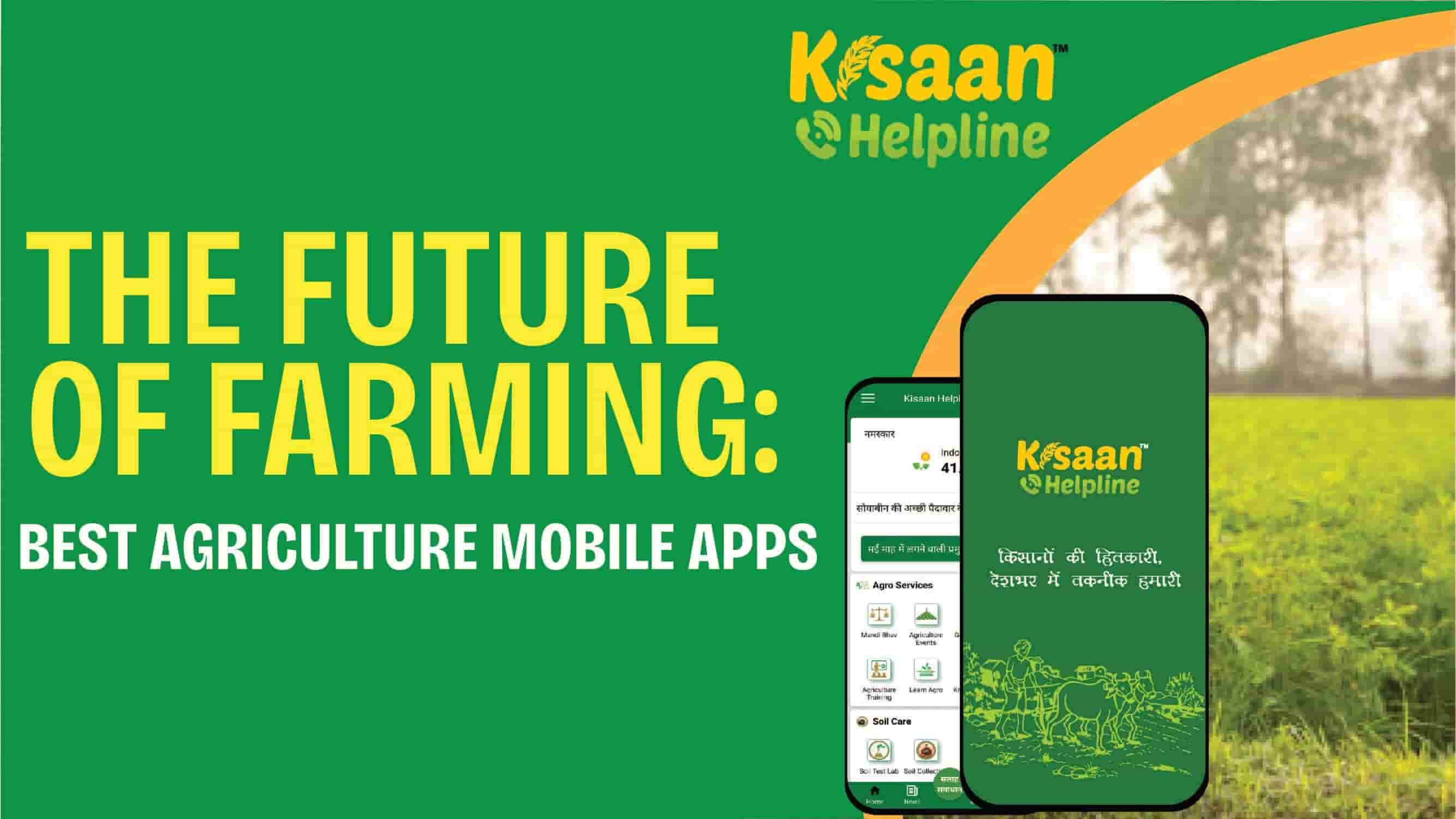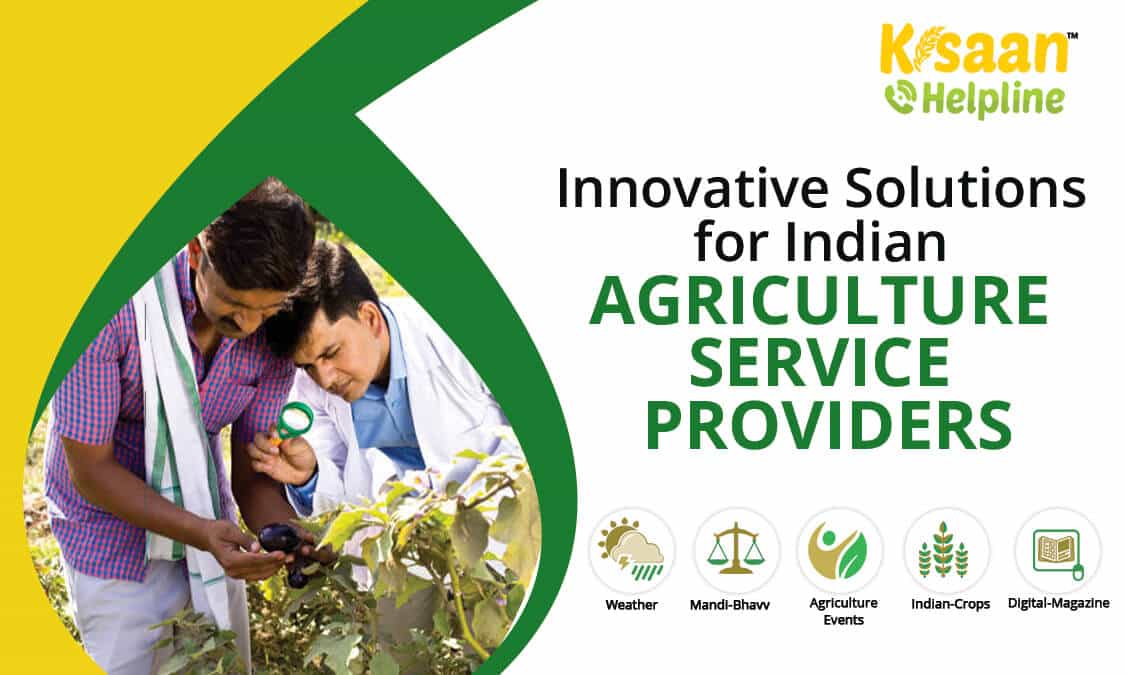
The age of technology and digitalization has brought about a significant change in the way we consume information. This is especially true in the world of agriculture, where traditional print magazines have been joined, and in many cases, replaced by digital magazines or e-magazines. These digital publications provide a wealth of knowledge, insight, and resources to farmers, agribusiness professionals and anyone interested in the agriculture industry.
We will learn in detail about the world of agricultural e-magazines. From understanding what they are and how they work, to exploring the benefits they provide to readers and magazine publishers, we will highlight the digital crop of agricultural knowledge and information available at your fingertips.
1. Introduction
Digital Transformation of Agriculture
Agriculture, the cornerstone of human civilization, has undergone remarkable changes in the last few years. This change has been largely driven by technological advances that have led to precision farming, sustainable practices and improved agricultural productivity. One of the important drivers of this change is the digitalization of agriculture.
From sensor-equipped tractors to satellite-guided irrigation systems, technology has left its mark on the agriculture sector. Farmers now have access to real-time weather data, crop monitoring tools and market information, empowering them to make informed decisions. This digital revolution has also affected the way agricultural information is disseminated, leading to the rise of digital magazines in the agriculture industry.
The Rise of Digital Magazines
The publishing industry, like many others, has been greatly impacted by the digital age. Traditional print publications have seen declines in readership and revenue, while digital platforms have gained prominence. This change in reading habits has given rise to digital magazines or e-magazines, which allow readers to access content on their digital devices, be it smartphones, tablets or computers.
In the context of agriculture, e-magazines have become an invaluable source of information, insight, and inspiration for farmers, agronomists, researchers, and agribusiness professionals. These digital publications provide a dynamic platform to share knowledge, trends, and innovations in the agriculture sector. Now let us find out what agricultural e-magazines are and what unique benefits they offer.
2. What Are Digital Magazines?
Defining E-Magazines
Digital magazines, commonly known as e-magazines or online magazines, are digital publications that replicate the look and feel of traditional print magazines but are designed for consumption on electronic devices. These cover a wide range of topics including fashion, lifestyle, technology and, in our case, agriculture. E-magazines are typically available in a variety of digital formats, such as PDF, interactive web-based formats, or dedicated mobile apps.
Evolution From Print To Digital
The transition from print magazines to digital magazines is driven by several factors:
Accessibility: Digital magazines can be accessed from anywhere with an Internet connection, eliminating the need for physical copies.
Interactivity: E-magazines often incorporate multimedia elements, such as videos, animations, and interactive infographics, which enhance the reading experience.
Timeliness: Digital magazines can be updated in real time, allowing the latest news and developments to be included.
Cost-Effectiveness: Producing and distributing digital magazines is often more cost-effective than printing and shipping physical copies.
Environmental Considerations: The digital format is environmentally friendly, as it reduces paper use and carbon emissions associated with transportation.
Now, let's explore the landscape of agriculture e-magazines and the variety they offer to readers.
3. Agriculture Digital Magazine Landscape
Types of Agricultural E-Magazines
Agricultural e-magazines cover a wide spectrum of topics within the industry. Some common types of agricultural e-magazines include:
KisaanHelpline Magazine: Kisaan Helpline magazine is a publication that provides valuable information and resources for Indian agricultural workers. The magazine covers topics such as crop management, farm equipment and market trends with a focus on improving the livelihoods of farmers and their communities.
Agribusiness: E-magazines in this category cater to professionals in the agribusiness sector. They provide information about market trends, supply chain management and the latest innovations in the field.
Sustainable Farming: With the increasing emphasis on sustainable agriculture, e-magazines in this field explore eco-friendly farming practices, organic farming methods, and conservation efforts.
Technology and Innovation: These e-magazines highlight the latest advances in agricultural technology, including precision farming, automation and IoT applications.
Rural Lifestyle: Beyond the technical aspects, some e-magazines delve deeper into rural lifestyle, celebrating the culture and traditions of farming communities.
Major Players in The Industry
The world of agricultural e-magazines is vast and diverse, with many publishers and platforms contributing to its growth. Some major players in the industry include:
KisaanHelpline.com: Kisaan Helpline is a toll-free farmer suicide prevention helpline in India. It provides emotional support and connects farmers with local resources for financial, medical, and agricultural support.
Farm Journal's AgWeb: Offers e-magazines and digital content on topics ranging from farm management to market analysis.
Successful Farming: Offers a variety of e-magazines covering topics such as machinery, technology, and farm family life.
AgriBusiness Global: Focuses on agribusiness news, trends, and market analysis, making it a valuable resource for professionals in the industry.
Progressive Farmer: Known for its e-magazine, it covers a wide range of topics including agriculture, lifestyle and rural life.
These are just a few examples, and there are many more e-magazines for specific areas and sectors of the agriculture sector. The diversity of e-magazines ensures that readers can find content that suits their interests and needs.
4. Benefits of Agricultural E-Magazines
Agricultural e-magazines provide a lot of benefits to both readers and magazine publishers. Let us learn about some of the advantages that make them a valuable source of information and knowledge.
Accessibility and Convenience
A primary advantage of e-journals is their accessibility. Readers can access digital magazines from their home, in the field or anywhere through an Internet connection. This feature eliminates the need to carry physical copies and ensures that valuable agricultural information is always within reach.
Rich Multimedia Content
Digital magazines take advantage of the digital format by incorporating multimedia elements. Readers can enjoy videos, interactive infographics, audio clips, and animations that enhance the content and provide a more engaging reading experience. This multimedia approach can effectively convey complex agricultural concepts and techniques.
Timely Updates and Interactivity
E-magazines can be updated in real time to reflect the latest developments in the agriculture industry. Readers can stay informed about changing weather patterns, market prices and emerging technologies. Additionally, interactive features such as polls, quizzes, and comment sections allow readers to engage with the content and share their insights.
Eco-Friendly Publishing
The digital format of e-magazines is environment friendly. This reduces the need for paper production, printing and transportation, which are resource-intensive and contribute to carbon emissions. By choosing digital magazines, readers, and publishers can reduce their ecological footprint.
Cost-Effective Delivery
For publishers, distributing digital magazines is cost-effective compared to printing and shipping physical copies. These cost savings can be passed on to readers, making subscriptions more affordable. Additionally, digital magazines can reach a global audience without the logistical challenges of international distribution.
Agricultural e-magazines benefit both readers seeking valuable insights and publishers looking for efficient ways to disseminate information. Now let's explore how readers can access these digital publications and how magazine publishers can create and distribute them.
5. How to Access Agriculture E-Magazines
Digital Magazine Platforms
Readers can access agriculture e-magazines through various digital magazine platforms and websites. These platforms offer a user-friendly interface and allow readers to explore a wide range of e-magazines covering different aspects of agriculture. Here's how to access e-magazines:
Visit Kisaan Helpline: Kisaan Helpline magazine is a publication that provides valuable information and resources for Indian agricultural workers. The magazine covers topics such as crop management, farm equipment and market trends with a focus on improving the livelihoods of farmers and their communities.
Visit Digital Magazine Platforms: Start by visiting digital magazine platforms like Magzter, Zinio, or Readly. These platforms offer a vast library of e-magazines across different genres, including agriculture.
Search for Agriculture E-Magazines: Use the search feature on the platform to look for agriculture e-magazines. You can enter keywords like “agriculture,” “farming,” or specific topics of interest.
Browse and Select: Browse through the list of available e-magazines and select the ones that align with your interests or informational needs.
Subscribe or Purchase: Depending on the platform, you may have the option to subscribe to specific e-magazines or purchase individual issues. Subscriptions often offer cost savings and regular access to new content.
Read Online or Download: Once you've subscribed or purchased an e-magazine, you can choose to read it online through the platform's web reader or download it for offline reading on your preferred device.
Subscriptions and Free Access
Many e-magazines offer both subscription-based models and free access options. Subscribers typically enjoy benefits such as uninterrupted access, early access to new issues, and additional content. However, some e-magazines provide selected articles or issues for free, allowing readers to sample their content before committing to a subscription.
Additionally, some agriculture e-magazines may have their dedicated websites where readers can access content directly. These websites typically offer a mix of free and premium content, with subscriptions unlocking full access to the e-magazine's resources.
6. Publishing Agriculture E-Magazines
Magazine Creation Tools
For magazine publishers interested in creating and publishing agriculture e-magazines, there are various tools and platforms available. These tools streamline the magazine creation process and enable publishers to design interactive and engaging digital publications. Some popular magazine creation tools include:
Adobe InDesign: A professional design software regularly used for creating digital magazines with rich multimedia elements.
FlipHTML5: An online platform that allows publishers to convert PDFs into interactive digital magazines.
MagLoft: A digital publishing platform that offers tools for creating and distributing digital magazines across different devices.
Joomag: A platform that provides design and publishing tools for creating interactive e-magazines.
Zinio: A digital distribution platform that helps publishers reach a global audience with their e-magazines.
Distribution Strategies
Once an agriculture e-magazine is created, publishers can employ various distribution strategies to reach their target audience. Here are some effective distribution strategies:
Digital Magazine Platforms: Publishers can partner with digital magazine platforms to make their e-magazines available to a broader audience.
Subscription Models: Offering subscription plans provides a steady source of revenue and encourages reader loyalty.
Email Marketing: Building an email list and sending regular updates and snippets of content can attract readers to the e-magazine.
Social Media Promotion: Leveraging social media platforms to share articles, videos, and promotions can increase visibility and engagement.
SEO and Online Presence: Optimizing content for search engines and maintaining an online presence through a dedicated website can attract organic traffic.
Collaborations and Partnerships: Collaborating with other publications, agricultural organizations, or influencers can help reach a broader audience.
Content Marketing: Sharing valuable articles, infographics, and resources related to agriculture can attract readers and establish authority in the field.
Monetizing Agriculture E-Magazines
Monetizing agriculture e-magazines is essential for sustaining their production and distribution. Publishers can explore various monetization strategies, including:
Subscription Fees: Charging readers a fee for access to premium content or the entire e-magazine.
Advertising: Selling ad space to relevant agricultural brands and businesses.
Sponsored Content: Partnering with companies to create sponsored content that aligns with the e-magazine's niche.
Affiliate Marketing: Promoting products or services related to agriculture and earning a commission for each sale generated through affiliate links.
Merchandise Sales: Selling merchandise related to the e-magazine's brand or content.
Donations and Crowdfunding: Encouraging readers to support the e-magazine through donations or crowdfunding campaigns.
Events and Webinars: Hosting paid events, webinars, or workshops related to agriculture.
Each monetization strategy should align with the e-magazine's goals, audience, and content. Successful e-magazines often combine multiple revenue streams to diversify their income.
7. Case Studies: Successful Agriculture E-Magazines
Kisaan Helpline: Revolutionizing Farming Practices
Kisaan Helpline is an agriculture e-magazine dedicated to providing innovative solutions for modern farming. With a focus on sustainable practices and technology integration, the magazine has gained a loyal following of farmers and agribusiness professionals. Through in-depth articles, video tutorials, and expert interviews, Kisaan Helpline has helped readers optimize their farming methods, reduce environmental impact, and improve crop yields. Its subscription-based model has allowed for consistent growth and the creation of premium content.
Krishi Jagran: Connecting the Agribusiness Community
Krishi Jagran takes a unique approach by fostering connections within the agribusiness community. This e-magazine provides a platform for agribusiness professionals to share their insights, experiences, and success stories. It hosts regular webinars and virtual networking events, allowing readers to connect with industry leaders and peers. With a combination of subscription revenue and sponsored content from agricultural companies, Krishi Jagran has successfully created a thriving community of agribusiness enthusiasts.
These case studies illustrate the diverse approaches that agriculture e-magazines can take to provide value to their readers and generate revenue. By understanding their audience's needs and leveraging digital platforms, these e-magazines have carved out a niche in the agricultural publishing landscape.
8. Challenges and Future Trends
Navigating Digital Publishing Challenges
While agriculture e-magazines offer numerous benefits, publishers may encounter challenges in the digital publishing landscape. Some common challenges include:
Content Quality: Maintaining high-quality, relevant content that meets readers' expectations can be demanding.
Monetization: Finding effective monetization strategies that balance revenue generation with reader satisfaction can be a challenge.
Competition: The digital publishing space is competitive, with numerous e-magazines vying for readers' attention.
Technology Updates: Keeping up with evolving digital technologies and platforms is essential for a seamless reading experience.
The Future of Agriculture E-Magazines
The future of agriculture e-magazines is promising. Several trends are shaping the landscape:
Personalization: E-magazines are increasingly using data-driven insights to personalize content recommendations for readers.
Interactive Features: Enhanced interactivity, including virtual reality and augmented reality elements, will make e-magazines more engaging.
Sustainability Focus: E-magazines will continue to spotlight sustainable farming practices and eco-friendly initiatives.
Mobile Optimization: As more readers access e-magazines on mobile devices, optimizing content for mobile platforms will become standard.
Blockchain for Trust: Blockchain technology may be used to ensure the authenticity and credibility of agricultural information in e-magazines.
Conclusion
Harnessing the Power of Agricultural E-Magazines
Agricultural e-magazines have become essential sources of knowledge, insight, and inspiration for individuals and professionals in the agricultural industry. They provide easy and convenient access to a wealth of information covering a wide variety of topics in the field of agriculture. Whether you're a farmer looking to optimize your practice, an agribusiness professional seeking market intelligence, or an avid rural enthusiast, there is an agriculture e-magazine to suit your interests.
Developing knowledge in the digital age has never been easier, thanks to the availability of agricultural e-magazines. By exploring these digital publications, readers can stay informed about the latest trends, adopt sustainable practices, and connect with a community of like-minded individuals. For magazine publishers, the digital landscape offers opportunities to share valuable content, connect with audiences, and explore innovative monetization strategies.
As we witness the digital transformation of agriculture, agricultural e-magazines will continue to be important tools for disseminating information, promoting sustainable practices, and connecting the agricultural community. Whether you are a reader seeking insights or a publisher with a passion for agriculture, a digital harvest of knowledge awaits you in the world of agricultural e-magazines.







